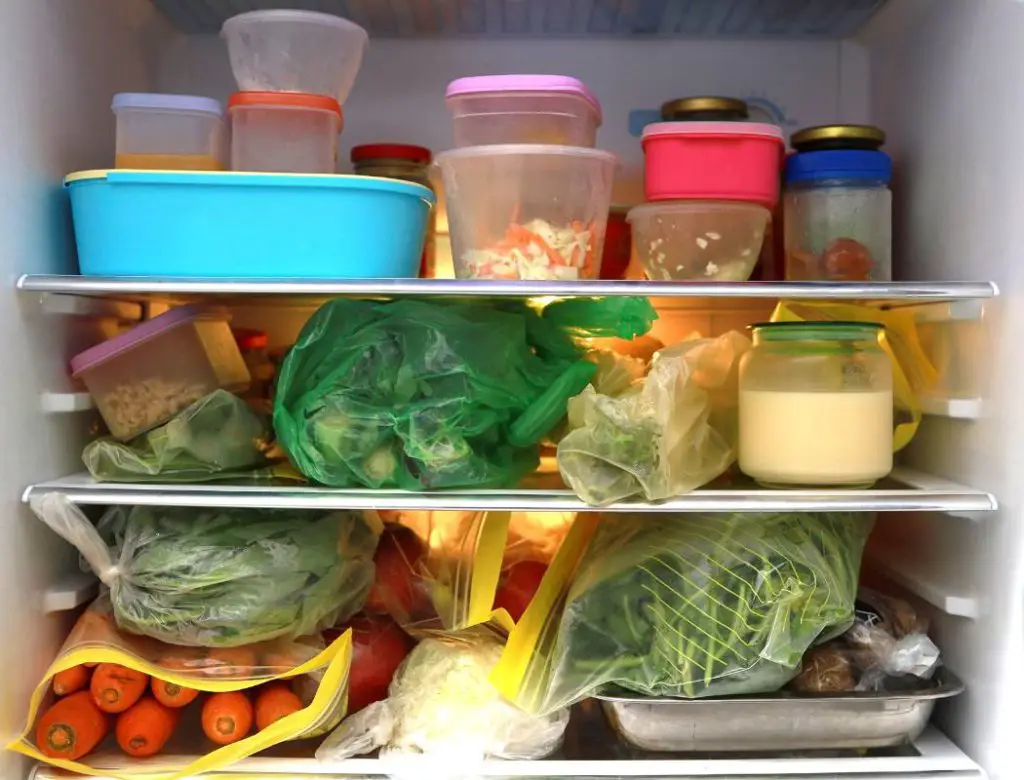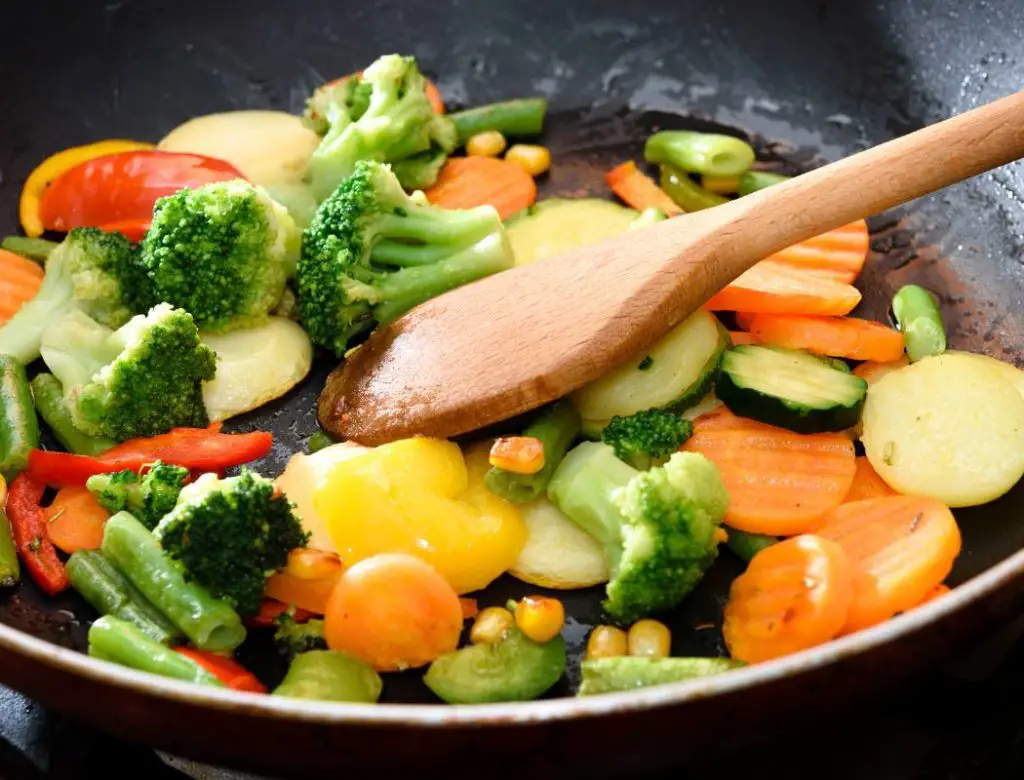Are leftover vegetables high in histamine? Histamine is a naturally occurring compound your body produces but it’s also in certain foods.
While histamine plays a critical role in our immune system and digestive processes, excessive amounts can cause a range of uncomfortable symptoms. (1)
There are many factors that can affect the histamine content of a food. For example, how a food is prepared, processed, stored, and cooked can impact its histamine content. These factors can also alter the content of other biogenic amines.
Histamine is one type of biogenic amines, but there are others. Some others include serotonin, dopamine, histamine, and norepinephrine, which are neurotransmitters that play key roles in regulating mood, behavior, and other physiological functions.(5)
Biogenic amines also play important roles in other biological processes, such as regulating blood pressure, modulating immune function, and controlling the release of hormones.
Certain bacteria produce histamine, such as lactic acid bacteria. These bacteria are involved in the fermentation process. Therefore, foods that are fermented, aged, or stored for a long time are more likely to have higher histamine levels.
That’s why eating the freshest of foods is important if you have histamine intolerance.
If you have histamine intolerance, you probably add vegetables to your plate and you may be tempted to save the leftover vegetables in the fridge to reheat and et at a later time. But is that a smart idea?
Let’s take a closer look at whether leftover vegetables are high in histamine and which vegetables to avoid if you have histamine intolerance.

High Histamine Vegetables
First, there are certain vegetables you should avoid if you have histamine intolerance.
Although many vegetables are excellent sources of phytonutrients and compounds with anti-inflammatory activity (a good thing), not all vegetables are naturally low in histamine. Specific vegetables that we know to be high in histamine and can trigger histamine intolerance symptoms include:
Spinach
Spinach is a nutrient-dense leafy green that’s well known for its health benefits. However, it is also known to be high in histamine. Why is such a healthy veggie high in histamine?
Spinach contains high levels of nitrites, which bacteria convert to histamine. Spinach is also high in oxalates, which is problematic for people with a history of forming calcium oxalate kidney stones.(6)
Tomatoes
Tomatoes are a common ingredient in many dishes, but they are also high in histamine.(7) This is because tomatoes contain high levels of an enzyme called polyphenol oxidase, which can convert histidine (an amino acid) to histamine.
Plus, tomatoes are a histamine liberator, meaning they trigger the release of histamine by mast cells, a type of cell that prodces histamine. That’s why tomatoes, ketchup, and tomato sauce should be off the menu if you have histamine intolerance.
Avocado
Avocado is a popular and nutrient-dense fruit that has enjoyed a recent surge in popularity. People are enthusiastically adding it to salads, sandwiches, and smoothies – and even making avocado toast. However, the fruit they’re making that creamy toast with is also high in histamine. This is because avocados contain a naturally occurring compound called histidine, which bacteria convert to histamine.
Eggplant
Eggplant is a versatile vegetable often used in Mediterranean and Asian cuisine. However, it is also known to be high in histamine. (2) This is because eggplant contains high levels of an enzyme called tyramine (3), which can trigger the release of histamine in the body.
Fermented Vegetables
Fermented vegetables, such as sauerkraut and kimchi, are known to be high in histamine. (4) This is because the fermentation process encourages the growth of bacteria, which can produce histamine as a byproduct.
Fermented vegetables are the worst of the worst when it comes to triggering histamine intolerance symptoms. This includes kombucha, kefir, kimchi, sauerkraut, pickles, yogurt, and aged cheeses.
Therefore, you should avoid the above vegetables rather they’re raw, cooked, fresh or leftover, since they naturally contain histamine or stimulate the release of histamine. This still leaves a lot of vegetables you can safely enjoy without fear of triggering histamine intolerance symptoms.
Can you safely eat leftover vegetables on a low-histamine diet?

Leftover Vegetables and Histamine
The histamine content of leftover vegetables varies depending on a variety of factors. In general, fresh vegetables (other than the vegetables mentioned above) are low in histamine, but once you cook them or let them sit for an extended period, their histamine content can increase.
This is because bacteria enter the food and these bacteria produce histamine as the food ages. When you cook vegetables, the heat can kill off some bacteria, but not all of them, but histamine itself is resistant to heat and remains in the food.
As a result, the longer your vegetables sit on a counter or even in the refrigerator, the higher the histamine content may become, as the bacterial population increases, and they produce more histamine.
Reducing Your Exposure to Histamine by Handling Leftover Vegetables (and All Food) Properly
If you are concerned about the histamine content of your leftover vegetables, take steps to reduce your exposure. First, try to eat your vegetables as soon as possible after cooking or purchasing them.
If you have leftovers, store them in the fridge in an airtight container and try to consume them within two days. The sooner, the better! Get out of the habit of reheating leftovers multiple. times too.
It’s also a good idea to avoid cooking your vegetables in advance if possible. Instead, consider preparing them fresh each day to reduce the amount of time they spend in the fridge.
Also, avoid storing your vegetables in the refrigerator for long periods before cooking them, as this can also increase the histamine content. Refrigeration slows the growth of bacteria but doesn’t stop it.
If you can’t eat fresh vegetables quickly, buy frozen ones. They contain similar nutrition but freezing stops the production of histamine and you don’t have the urgency of preparing and using vegetables quickly.
Find out about the histamine content of pumpkin.
Are Leftover Vegetables High in Histamine?
While leftover vegetables can contain histamine, the level of this compound can vary depending on a variety of factors.
To reduce your exposure to histamine, eat your vegetables as soon as possible after cooking or purchase, store them in an airtight container in the fridge, and avoid cooking them in advance if possible.
Also, avoid all vegetables known to be high in histamine, including spinach, eggplant, avocado, tomatoes, and fermented vegetables. On the plus side, enjoy an abundance of low-histamine vegetables. These foods contain a variety of phytonutrients with anti-inflammatory activity. (8)
By taking these steps, you can enjoy the health benefits of vegetables without worrying about the histamine content. Find out if celery is high in histamine.
References:
- Maintz L, Novak N. Histamine and histamine intolerance. Am J Clin Nutr. 2007 May;85(5):1185-96. doi: 10.1093/ajcn/85.5.1185. PMID: 17490952.
- Kumar MN, Babu BN, Venkatesh YP. Higher histamine sensitivity in non-atopic subjects by skin prick test may result in misdiagnosis of eggplant allergy. Immunol Invest. 2009;38(1):93-103. doi: 10.1080/08820130802608295. PMID: 19172488.
- www.Sciencedirect.Com, 2023, https://www.sciencedirect.com/science/article/abs/pii/S2212429220311949. Accessed 16 Mar 2023.
- “Low-Histamine Diet”. 2023. Www.Healthline.Com. https://www.healthline.com/health/low-histamine-diet.
- Wójcik W, Łukasiewicz M, Puppel K. Biogenic amines: formation, action and toxicity – a review. J Sci Food Agric. 2021 May;101(7):2634-2640. doi: 10.1002/jsfa.10928. Epub 2020 Dec 12. PMID: 33159318.
- Mitchell T, Kumar P, Reddy T, Wood KD, Knight J, Assimos DG, Holmes RP. Dietary oxalate and kidney stone formation. Am J Physiol Renal Physiol. 2019 Mar 1;316(3):F409-F413. doi: 10.1152/ajprenal.00373.2018. Epub 2018 Dec 19. PMID: 30566003; PMCID: PMC6459305.
- https://www.researchgate.net/figure/Histamine-levels-in-tomatoes_tbl2_12622588
- Zhu F, Du B, Xu B. Anti-inflammatory effects of phytochemicals from fruits, vegetables, and food legumes: A review. Crit Rev Food Sci Nutr. 2018 May 24;58(8):1260-1270. doi: 10.1080/10408398.2016.1251390. Epub 2017 Jun 12. PMID: 28605204.

